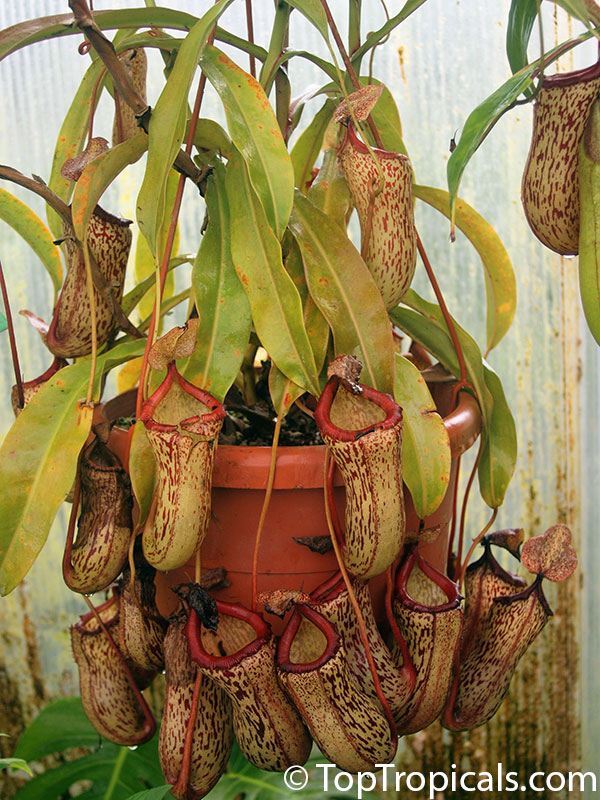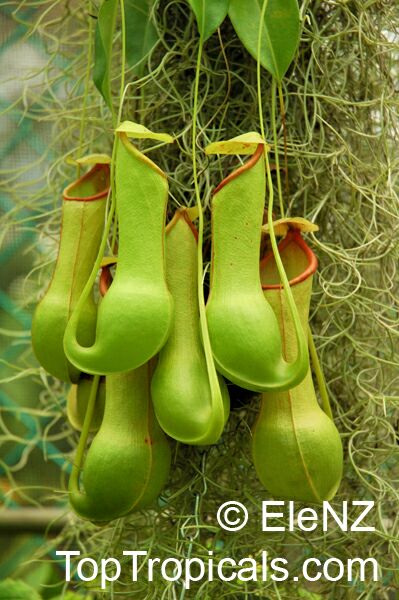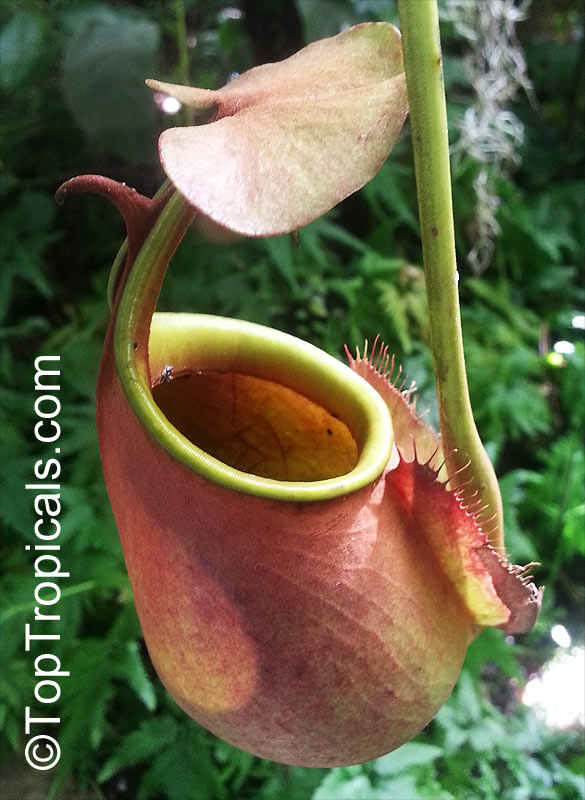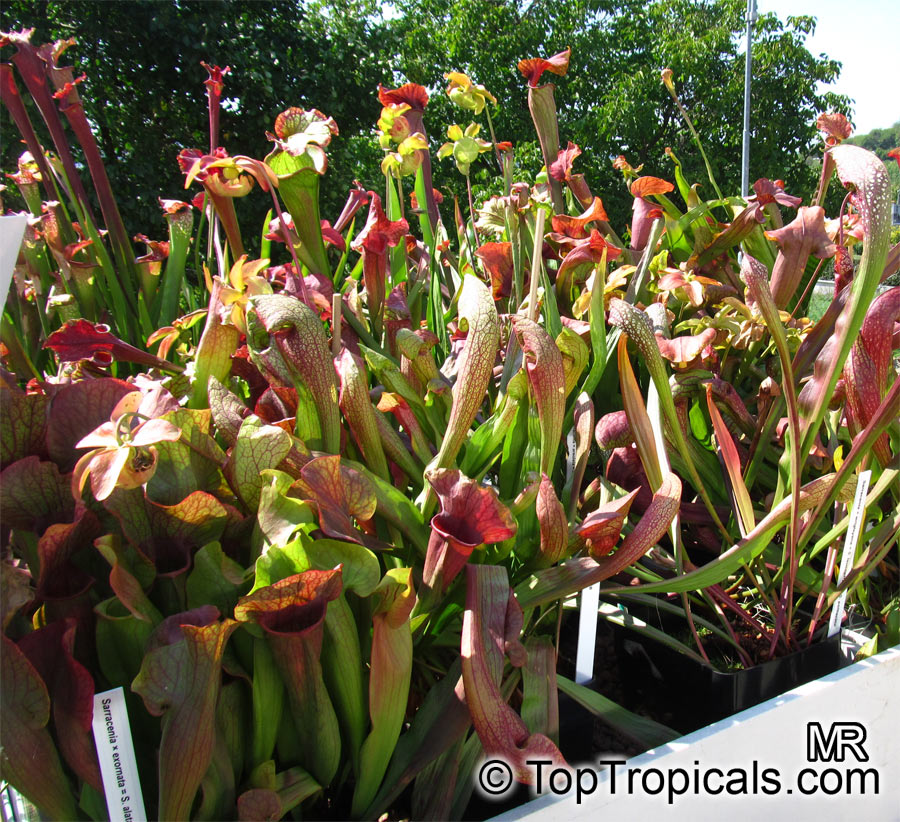Allure of the Tropics
Predatory Pitcher Plants
 Author: Jane Jordan
Author: Jane Jordan
Jane Jordan is a horticulturist and has studied and worked at the RHS botanical gardens in Cannington, England.
She now lives in Sarasota, Florida. Alongside her passion for horticulture, she is also a novelist.
Quick Facts:
Botanical Name: Nepenthaceae or Sarraceniaceae families
Common Names: Pitcher Plant, Monkey Cups
Origin: Native to many countries
Zone: Various – does well in both cool and warm conditions
Exposure: Sun or part shade
Humidity – Pitcher plants thrive in high humidity
Growth Rate: As the plants grow older they produce successively larger pitchers. After a few years of growth, the plants are mature.
Soil: Well drained, but low in nutrients, they prefer poor soils
Water: Keep soil moist, you can add a splash of water to each cup to keep bacteria healthy
Pitcher Color: Light green, dark red or violet mottling
Propagation: Seeds or cuttings.
Fertilizer: Insects will naturally fertilize
Pests/Diseases: Spider Mites, if the plant is too dry. Occasional aphids, leafhoppers and mealybugs
Note: Requirements vary with each species
 The carnivorous pitcher plant has pitcher or cup shaped leaves that form a pitfall trap. This plant has evolved a prey trapping mechanism that lures victims into a deep cavity, which is filled with digestive fluid.
The carnivorous pitcher plant has pitcher or cup shaped leaves that form a pitfall trap. This plant has evolved a prey trapping mechanism that lures victims into a deep cavity, which is filled with digestive fluid.
Most often, ants, flies, wasps and bees are attracted to nectar and visual lures such as anthocyanin pigments (Anthocyanins are important plant pigments. They attract insects to pollinate flowers, protect plants from UV irradiation, and act as antimicrobial agents against herbivores and pathogens). After insects enter the trap, they slip down the slick wall, tiny hairs point downward, to prevent them from crawling back up, and exhausted, they fall to their demise.
The pitcher plant then uses the insect as fertilizer.
These plants thrive on neglect, and one common mistake that people make is to overwater them. They generally like to be in full sun, although will grow in partial shade. It is best to resist the temptation to feed a pitcher plant with lots of insects. If the pitcher becomes too full, it cannot photosynthesize, and will ultimately die.
Pitcher plants are found naturally in in many parts of the world including North America, where they range from Canada all the way down to Florida and across to Texas.
Six species of pitcher plant are native to Florida, they are most common in bogs, savannas, seepage slopes, hydric pine flatwoods and artificially created sites such as ditches
Old world pitcher plants (genus: Nepenthes) bear their pitchers at the end of tendrils that extend from the central rib of a leaf. These plants typically have reduced and symmetrical pitchers or cups with a waxy coating on the surface of the inner wall, these are the pitcher’s most often seen in hanging baskets.
Buy Pitcher plants from our store




